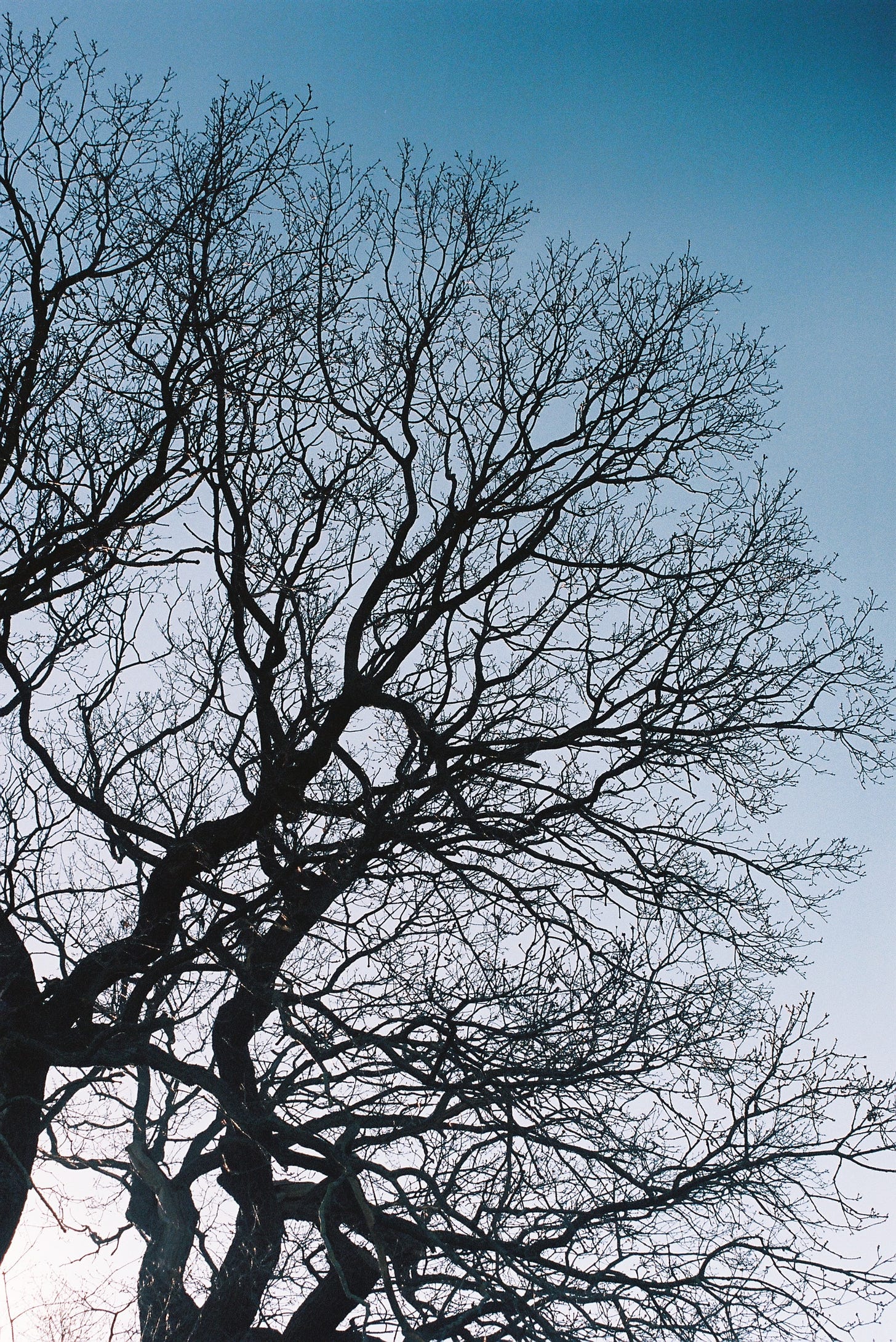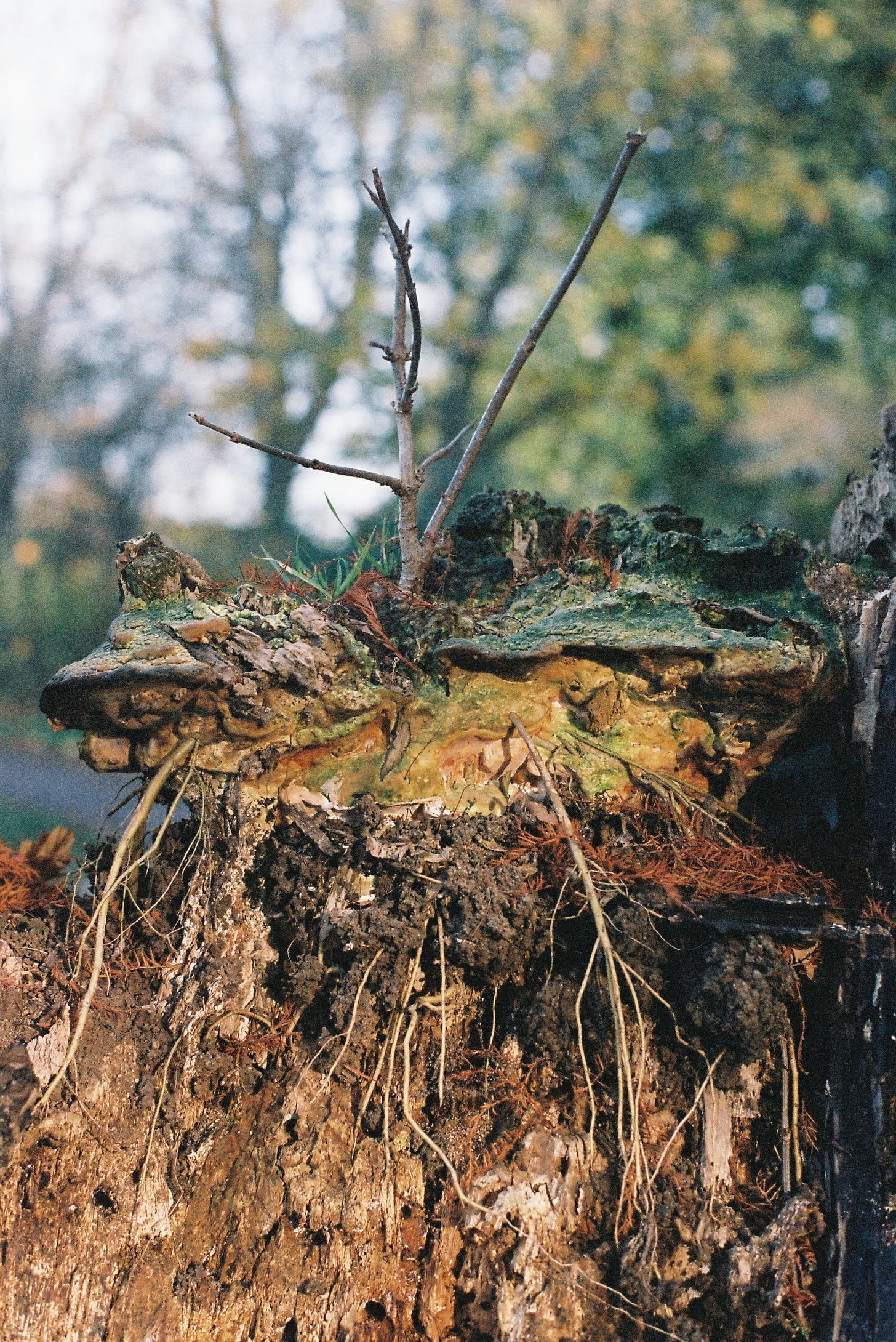When we went rock climbing in Spain earlier this year, my ten-year-old son would often rest next to a tree growing out of the crag, pointing out its calming presence. He would sit into his harness and enjoy the ‘good vibe’ before continuing his climb. I’m not a great climber by any means, but I also felt that when you’re twenty metres above ground, struggling on a cliff face, plants can indeed be very comforting.
This is not the first time my kids have taught me to pay more attention to the non-human world. They’re way more in tune with nature than I am, noticing birds, beetles and all sorts of creatures wherever they go. It’s a skill that we haven’t been particularly good at nurturing in our Western culture. Quite the opposite.
Human exceptionalism or anthropocentrism, the belief that humans are the most important entity in the universe and the pinnacle of evolution, hasn’t served us very well. Our actions have caused catastrophic imbalances, and the ongoing destruction of habitats is very much linked to this idea of human supremacy. New ways of being in the world and thinking about our place in it are urgently required. How can we learn to acknowledge the entanglement of our species with all other lifeforms and adopt a more humble position?
In the creative industries, human-centred design, an approach to problem-solving which is about cultivating a deep understanding of the people you’re designing for through research and prototyping, is slowly being replaced by a different school of thought: more-than-human design, which places the human in a web of interdependence with other organisms. Some of these ideas stem from American scholar Donna Haraway, who argued for kinship across the species barrier in many of her teachings. Speculative design for a more-than-human future tries to stimulate behavioural change and invites humans to develop a new relationship with the non-human world.
“For centuries, our species has been self-centred and has arrogantly placed itself above other species and things. This misguided attitude has created exploitative behaviours, not only towards animals, plants, and entire ecosystems but also towards other humans. We should begin by realising that when we damage other humans and the rest of nature, we damage ourselves.” — Paola Antonelli
Similarly, new forms of intelligence are discovered in the fields of science. Study after study reveals the fact that all kinds of creatures have the capacity to learn, to have memory, or even to predict the future. The non-human world, from fungi to trees, bacteria to birds, has much more agency than we give it credit for. This is something that we are only beginning to comprehend, but it has the potential to completely shift our view of the world. Of course, many indigenous communities have cultivated a completely different relationship with their environment. Robin Wall Kimmerer’s book Braiding Sweetgrass is a beautiful illustration of the profound wisdom of indigenous knowledge, and how it ties in with modern science. We in the West have a lot of catching up to do.
What does this have to do with leaving the city? Quite a lot, actually. As an attunement and reconnection to the non-human world is urgently needed, we must become better listeners. How can we foster genuine relationships with our environment? How can we become known to the non-human entities that live around us? What might we learn from those connections? Biologist and author David G. Haskell talks of a crisis of inattention:
“My claim is not that listening to the birds and the crickets is the only thing we need to be doing, but I do think it is a necessary part of a reorientation.”
Those practices are much easier to establish in less populated places. In the many conversations I had with city quitters, the non-human world suddenly plays a much more significant role in their lives or, for the first time, plays a noticeable role at all. Exposure to these other forces and life forms can have a humbling effect. It is so basic, but noticing birdsong, plant life, or lunar cycles connects us to the universe and reaffirms our place in it. We might realise that our internal weather is related to the external. We might be guided by it or adjust our creative practice accordingly. For better or worse, the impact of plants, animals, weather and seasons is more acutely felt in non-urban environments.
However, that doesn’t mean we can’t develop these skills and sensitivities in cities. New practices are emerging that help us pay attention to the seasons and the world around us wherever we are. A big rethink of our urban environments is needed as well. We would benefit from stepping away from the binary concepts of artificial and organic, wild and domesticated, living and nonliving, nature and culture. We are nature, after all. But even if we understand this on an intellectual level, it is not until we truly feel it on a visceral, bodily level that we can act from a place of compassion and care for all beings.
“Knowing that you love the earth changes you, activates you to defend, protect, and celebrate it. But when you feel that the earth loves you in return, that feeling transforms the relationship from a one-way street into a sacred bond.” — Robin Wall Kimmerer
Interestingly, a broader awareness of other forms of knowing emerges now, as AI is starting to play a more dominant role in our lives. Writer James Bridle, whose book Ways of Being explores planetary intelligence (I’m a few chapters in, a fascinating read!), believes that humans need to develop mental models to better understand the world, and that the role of AI might be to help us realise that there are other forms of intelligence out there.
However we might arrive there, being able to tap into more-than-human intelligence seems like a crucial skill to me. It can teach us humility and spur us on to be better custodians of this precious planet and all our fellow earthlings. So next time you pass a tree while rock climbing or walking through your local park, just do a quick vibe check. The trees’ presence might comfort you, too.
🕊️
I’ll leave you with a quote from my book, from herbalist Rachel Budde.
“When I began studying permaculture I heard an idea that some weeds growing in urban areas have medicinal properties correlating to the illnesses people suffer from in the same landscape. That was a really powerful discovery for me – seeing this connection to nature, even in the city.”
Some more non-human perspectives to explore
In this podcast episode author James Bridle, mentioned above, talks to Krista Tippett about his book and research on ‘the intelligence singing all around us’
Emergence magazine shares beautiful stories that explore the connections between ecology, culture, and spirituality. Check out this otherworldly film about the Arctic ice and its capacity to preserve history
Cosmo Sheldrake’s latest album Wild Wet World features the sounds of marine mammals including a rare recording of Scotland’s last remaining orca population who, along with their unique dialect are doomed to extinction as they are no longer fertile due to chemical contaminates in their waters. 50% of the publishing royalties will go to organisations that support marine wildlife. Give it a listen!







I am so happy I arrived to your newsletters and book by going through two different newsletters (Jonas Kooyman > Rosie Spinks > here). I have never seen someone write about the absurdity of living an anthropocentric life in such a gentle but clear way. When I do it, it always comes accross a bit harsh and over the top. Thank you for the cultural analyses, I am really enjoying it.
Digging this and such a clever name. Thanks for the additional resources ❤️